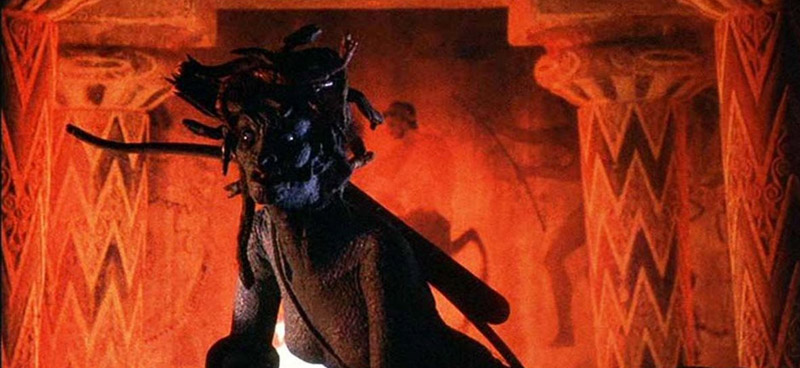Shared thoughts
about art and life.
Myth, techniques and R. Eggers

Be it epic and literal; Clash of the Titans (1981). Or a loose interpretation; O brother where art thou? (2000) Filmmakers over the world use myth to both compliment and contradict our current reality. However, when we talk of myth, do we mean ancient myth? The Gods? Or, Billy the Kid? Most Westerns stand much closer to myth, or at least legend, than fact. Myth permeates time and geography, enduring through its application in reflecting the human condition.
Self reflection
Spoilers.
What better way to study and confront ourselves than by transmuting say, grief into a bogeyman? Or psychosis into a building? As an audience, we must buy into this transmutation. We are hopefully
aided in this by being so enveloped in an atmosphere that there is no escape. A prison built by precise and meticulously researched world-building; a craft of which Robert Eggers is fast becoming a master of. An ability to combine 1. the historical; factual and mythological, with 2. preciseness and composition of a cinematic visionary (aided by brother Max Eggers and cinematographer Jarin Blaschke). The Lighthouse (2019):
1. A grand, sprawling world built entirely around an isolated lighthouse, so diligently realised that we are undeniably there with them, Melville levels of description through visuals. And so, when the myths and the fables, and the sea shanties and farts increase, we experience it deeply. The storm increases inside and out, combining to make a shared, isolated space, and a shared, isolated mind.
2. Jarin Blaschke’s 1:66 ratio in The Witch (2015), a slightly taller ratio given it is primarily a backdrop of trees is almost squared to 1.19:1 in The Lighthouse, achieving a claustrophobia and a centralised viewing point. Couple this technical attention with comprehensive worldbuilding and we are no longer in the cinema but transported, at once within the lighthouse but unsure why. Afraid and curious, right alongside Winslow and Thomas, in the maelstrom.
This smashing together of myth and technique allows us to become Winslow or Thomas, or both. Surrealism imprinted with cohesion. Place and purpose-built up, time and identity broken down.
“How long have we been here?”
In both The Witch and The Lighthouse, we are drawn into worlds of such detail, such accuracy that believing anything becomes easy, no matter how fantastical. We glimpse our own reality exist within a world of fable and fiction. Eggers smashes together characters and tales from across time and culture, culminating in us, in the present, questioning what we think we know about self-preservation, and in the case of The Lighthouse, what we think we know about identity and by whom identity is delegated and determined.
“It’s bad luck to kill a seagull” warns Willem Dafoe’s Thomas. Calling to mind the fate of a certain albatross in The Tale of the Ancient Mariner. One group condemning another as to not pay for their own crimes. The Lighthouse uses this as a touchstone to dissect our sensibilities of identity. How can we really know ourselves? We have our peers and we have our consciousness but ultimately, we have no-one with which to debate our identity with. It is yourself, and nothing more.
Winslow and Thomas play like they have each other, as we all do. With empathy that inherently resides within us, alas, so too resides entropy. Winslow and Thomas are juxtaposed, yet interchangeable. Supportive yet destructive. Each with secrets and each with a past not as they claim.
As the isolation and the drunkenness grows so too does the sense these men have no idea who they are, only that the other must hold the answer, the other one must be the key. The bastion of tradition, keeper of knowledge, he who determines if someone else is prepared enough to know themselves, against the curious anxiety of youth and modernity. An insatiable desire to have what has not yet been earned. These damn upstart Gods and their lack of respect for the old ways.
Photo: A24
Can't help who we are, whoever we are.
Should any one person wield such power as “to know everything”? Surely such a quest would drive one insane. A fate reserved for Robert Pattison’s Winslow, when finally, he holds the prize in his hands.
“Last night at a screening, someone asked me, “Why didn’t you photograph what Rob Pattinson sees at the end of the movie?” I said, “Because if you saw it, that same fate would befall you.” - Eggers.
Eggers decisions of what to show and what not gives us room to question what we saw and heard, thus what we believe, what we take away and repeat to others. I imagine the creation of myth followed much the same template. Leave out X... close-up on Y... Leave out Y... close-up on X... suddenly the story has been altered, now it has the potential to become a myth.
Is the light all knowledge, unwilling to be shared, and so stolen? Pandora’s box? The face-melting contents of the Ark of the Covenant? Could it possibly be no less of a McGuffin than Pulp Fiction’s briefcase? In asking these questions, the prevalence of myth is unmistakable to this day. Why do you think superstition still exists, heck, why religion?
We don’t need to see what Winslow sees because we will eventually. We will all eventually open the hatch, stare deeply into the light and wonder, and hope; maybe this thing knows the answer... suffering absolutely the same fate.
Tiger got to hunt,
bird got to fly; man got to sit and wonder 'why, why, why?'
Tiger got to sleep,
bird got to land; man got to tell himself he understand.
- Kurt Vonnegut.
